Published
on 15
Jul 2018
|
All rights reserved.
|
|
|
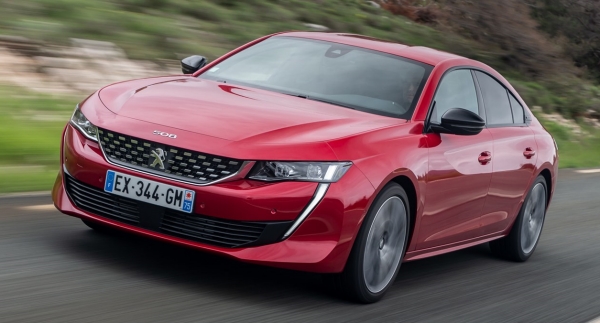
|
|
The
Peugeot family sedan now becomes a 4-door coupe and gains stronger
premium feel.
|
|
Everybody says D-segment
sedans are dying in Europe, at least for mainstream brands. Yes, while
family sedans are still selling well in the US and China, their sales
have been dropping every year in Europe for more than a decade. 15 or
20 years ago, Ford Mondeo, Renault Laguna, Peugeot 406, Citroen C5,
Opel Vectra, Nissan Primara and Honda Accord were still selling well.
Today, only the brands with semi-premium status and global presence can
still sell in meaningful numbers – yes, we are talking about Volkswagen
Passat. Even Ford has decided to pull the plug of Mondeo once this
generation phased out. Why does the segment keep shrinking? Two causes:
premium brands and SUV. Premium brands like the German Big Three,
Jaguar, Volvo and Lexus have increasingly wider exposure to the
segment, not necessarily using mid-size sedans but also compact premium
hatchbacks to steal the sales of traditional large family cars.
Meanwhile, the fever of SUV crossovers never stops, catching the buyers
concerning more about practicality. Lacking both the practicality and
desirability of their rivals, family sedans seem to face a dim future.
However, not everybody is going to surrender as soon as Ford. Peugeot
has just given its 508 another chance. Instead of keeping the old
formula, Peugeot decided to try something new. Firstly, it converts the
car into a hatchback to improve practicality. Secondly, it designs,
builds and equips the car like a premium product, so to improve its
desirability. Thirdly and the most importantly, it is reshaped to be a
“4-door coupe”, so that it is now a rival of Audi A5 Sportback, BMW
4-Series Gran Coupe, Mercedes CLA or Volkswagen Arteon. Can the French
car really fight with these premium cars? Let’s dig deeper to see.
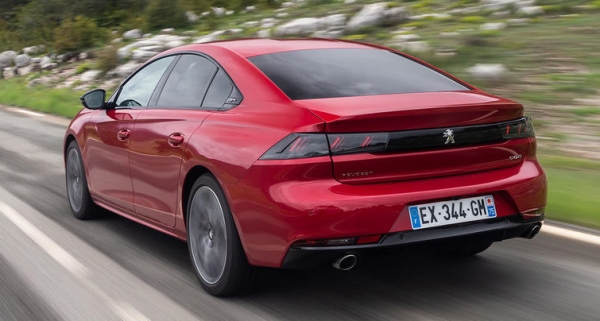
|
|
Fastback
roof line and frameless windows make it look like a 4-door coupe.
|
|
The second generation 508 – I think it should have been given a new
name because of its vastly different shape and market positioning –
looks the best from the rear, as it has a fastback roof line like a
true coupe. The proportion is very coupe, too. This car is 80mm shorter
than the old car, 12mm wider and, most importantly, 56mm lower.
Moreover, to lighten its visual mass Peugeot equips it with frameless
side windows, just like its rivalling premium 4-door coupes.
Moving over to the front, you might find the bonnet still looks a bit
too high and the nose not slim enough. Perhaps Peugeot should try
harder
to lower the mounting of its engine, like what Toyota has achieved with
its new Camry. That said, the new 508 still looks premium enough,
thanks to remarkable design details, most notably the cool-looking
front grille and clean bumper design. Meanwhile, it refuses to use
aggressive lines or heavily twisted surfaces to catch eyes, keeping the
cultured and restrained manner of 308. Over time, this will prove to be
a wise decision, benefiting the premium image it wants to build.
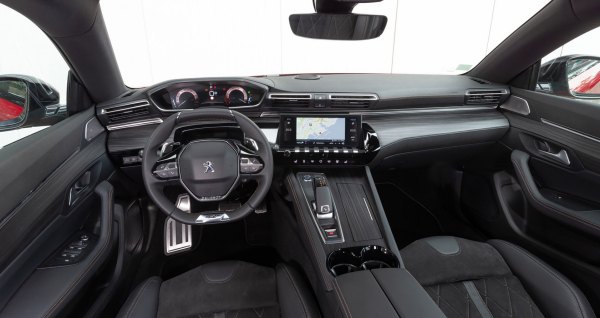
|
|
In top spec.
trim it feels even more expensive and tasteful than BMW.
|
|
Peugeot is not the only one opting for the change to coupe shape. Opel
did the same with its Insignia Grand Sport, but its attempt is largely
ruined by lacking elegant design details and adequate build quality to
match. Peugeot is far more successful in execution. Not only the
exterior design is neat and the panel gaps are narrow, the interior
feels premium as well. In fact, in top spec. trim I would say it feels
even more expensive and tasteful than BMW. There are aluminum piano
keys on the center console for shortcut functions. The instrument is a
12.3-inch TFT display which can be used to show 3D map or infrared
night vision image, very classy. Alloy pedals, stitched leather, wood
or carbon-fiber lookalike trims are available. Moreover, the interior
design is truly special. It again employs the brand’s trademark
architecture of placing the instrument pod above the very small
steering wheel. LED ambient lighting enhances the upmarket feel
further. The driver seat is low and supportive, an essential
requirement for a car with sporty flavours. Although the car’s
wheelbase is reduced to 2793mm, shorter than the class norm, the
front-wheel-drive layout means it can still offer good legroom to both
rows. In fact, its rear legroom is 30mm longer than Audi A5 Sportback.
Elbow room is 50mm wider as well. The only compromise, as you would
have already guessed, is rear headroom. It is fine for anyone not much
taller than 6 feet, but the swoopy roof line may make you feel
claustrophobic. Further back, the luggage compartment measures 487
liters, 14 liters more than before despite the car’s shorter overall
length. The load bay is wide and flat, and the hatchback tailgate makes
loading big items easier. This car sacrifices little practicality for
style.
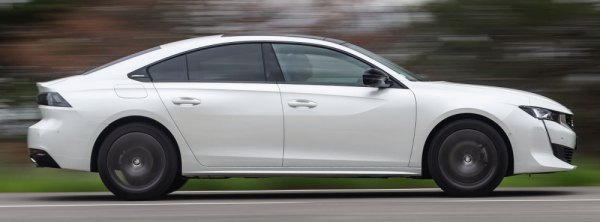
|
|
On the road,
the chassis is surprisingly good for a front-driver.
|
|
The new 508 is built on the modular EMP2 platform like 308, 3008, 5008,
Citroen C4 Picasso and DS7 Crossback., but it uses classier multi-link
rear axle in combination with adaptive dampers and camera-based active
road scanning. The new platform means an average of 70kg kerb weight
reduction compared with the old 508. Thanks partly to the use of
structural adhesives, chassis rigidity is much increased. Meanwhile,
the car has a remarkable drag cofficient of 0.26 and a smaller frontal
area, so everything is better.
On the road, the chassis is surprisingly good for a front-driver. It
feels solid, quiet and refined. The suspension is firm rather than
French-luxury soft, but it damps very well on most roads. High-speed
cruising refinement is particularly impressive. Only larger bumps in
town would transfer a thud into the cabin. Unlike German cars, its
steering is light, but it weighs consistently across the range. The
combination of light steering and a small steering wheel results in a
surprisingly agile feeling. Body control is good, with very little body
roll. Front to rear balance is also good. It is certainly a sportier
car than your Passat, Insignia or Superb, if not Mondeo. In its class,
its chassis dynamics are slightly above A5 Sportback and VW Arteon. The
rear-drive BMW and Kia Stinger are better to steer, of course, but the
French car feels different.
 |
|
1.6 petrol
turbo is a small engine stretched too far...
|
|
Nevertheless, engine remains a weak link. Peugeot forecasts more than
70 percent sales will go to the trio of diesel engines, i.e. 130hp
1.5HDi, 160hp 2.0HDi and 180hp 2.0HDi, while the minority will go to
the petrol 1.6-liter turbo in either 180hp or 225hp form. Confusingly,
these BMW-originated engines were previously called THP but now have
been rebranded to PureTech. Later on, the 180hp 1.6 petrol will be
paired with a 80kW front-axle electric motor in a plug-in hybrid model.
All engines are mated with a new 8-speed automatic gearbox, licensed by
Aisin for production in France.
While the top diesel is punchy yet refined, it adds 115kg over the top
petrol, compromising performance and handling a bit. The 225hp 1.6
turbo petrol might sound powerful, but it is a small engine stretched
too far. Low-down response and power are rather limited, certainly not
helped by the car’s 200-plus kilograms of extra weight over a 308GTi.
This means the 8-speed automatic needs to hunt for gears, which hurts
the sense of refinement. PSA group desperately needs to develop a new
petrol four-cylinder engine if it wants to keep its large cars.
The lack of an adequate engine aside, the new 508 is a very special car
worth consideration. It has an easygoing character. It handles and
rides good. Its interior feels special and upmarket. Style is also a
strong reason to consider. We just hope the French will continue to
deviate from the market norm.
|
Verdict:     |
Published
on 9
Sep 2021
|
All rights reserved.
|
|
508 PSE
|
|
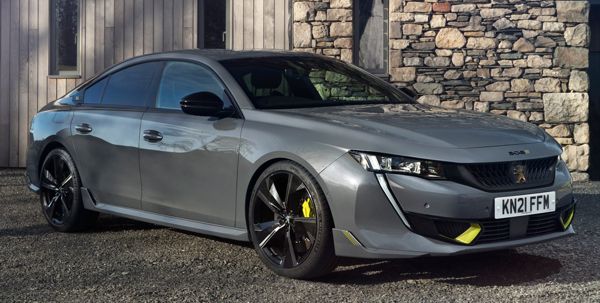
|
|
Peugeot
mates its small engine with electric motors to create a surprising
performance sedan.
|
|
In a segment dominated by
German sports sedans like BMW M340i, Audi S4 and more recently
challenged by rising stars like Kia Stinger GT and Genesis G70,
how can Peugeot attract the attention of buyers? You know, the European
operation of Stellantis (or ex-PSA) has been relying on engines with
no more than 4 cylinders and 1.6 liters of displacement for many years.
The last Peugeot employing a six-cylinder motor was the 407, which was
more than 10 years ago. However, the era of electrification opens a new
opportunity for Peugeot. While its rivals are having headache how to
balance between performance and emission, Peugeot finds its
BMW-developed 1.6-liter turbo engine a perfect match with electric
motors. The latter fills the power gap from its conventional rivals
when acceleration is called for. Meanwhile, the plug-in hybrid system
can lower its emission level to figures qualified for green car tax
cut, not to mention lowering fleet average, at least that’s how the
test cycles measure. Suddenly, a Peugeot sports sedan based on the
tastefully-styled 508 becomes a tempting yet unique option to buyers.
However, it demands more than a plug-in hybrid system to succeed.
Peugeot created the PSE (Peugeot Sport Engineered) label for its
upcoming electrified performance cars. It directed some of its
motorsport engineers to develop the hybrid system as well as
re-engineering the rest of the car, making sure the ride and handling
are also up to the job. From how the 508 PSE performs and drives, we
must say it is a surprising success.
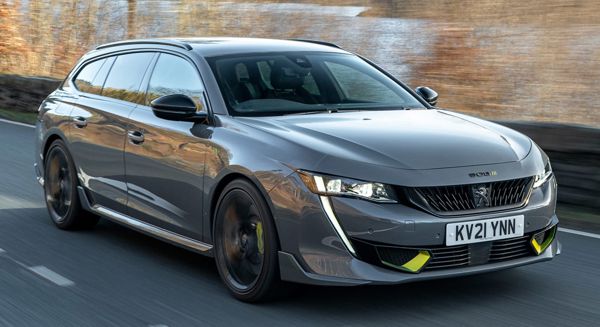
|
|
The
SW wagon is no less stylish than the liftback sedan
|
|
The 508 PSE is developed further from the existing 508 Hybrid. It has
the 1.6-liter turbo tuned from an economy-oriented 180hp to 200hp,
although the same engine could muster 270hp in the 2013 RCZ R coupe.
The
Hybrid’s 110hp disc-shape motor, sandwiched between the engine and
gearbox, is retained. At the rear axle, the PSE adds another 113hp
motor to drive the rear wheels directly. Since the battery is not
powerful enough to supply both motors at maximum output, the combined
output of the 3 power sources is limited to 360hp, accompanied with a
useful 384 lbft of torque. Brilliantly, PSE engineers found enough
space under the rear seat to accommodate the 11.4kWh battery, without
robbing any seating or luggage space. It offers a zero-emission range
of 26 miles and lowers emission figure to merely 46 g/km.
On the downside, the 508 PSE is inevitably heavier than its
conventional rivals. At 1850kg, it exceeds a similarly powerful M340i
xDrive by 180kg, and even more versus an Audi S4 Quattro. This explains
why it takes 5 seconds to sprint from 0-60 mph, while the BMW and Audi
take 4.2 and 4.5 seconds, respectively. Fortunately, the Peugeot is
still capable to run to the 155 mph norm of German machines.
On the road, the 508 PSE feels just like that. While the electric
motors fill the torque gap of the weak engine and improve throttle
response significantly, the car feels brisk rather than quick when you
plant the throttle. The integration of the two power sources is
generally good,
but at low speeds the Aisin 8-speed automatic sometimes hesitate to
decide
which gear or which power source to engage, resulting in some jerky
delivery. At the other extreme, pushing the powertrain hard and you
will hear the gruffy noise of the 1.6 engine. That said, in normal
driving or even high-speed cruising the powertrain works very well and
feels refined, rarely
revealing its less classy components.
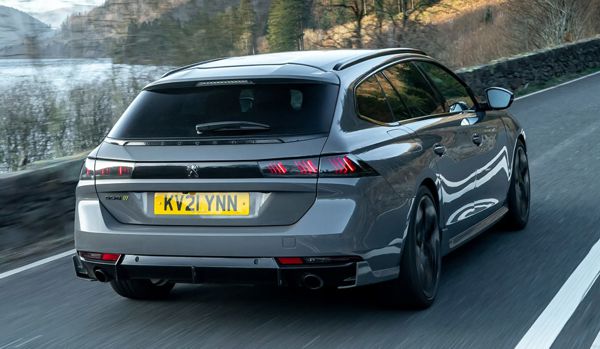 |
|
Fluid
dynamics and sophisticated ride are its biggest assets.
|
|
Better is the chassis. With so much weight to carry, you might doubt
its handling and ride. Fortunately, Peugeot reworked the chassis
extensively and brilliantly. The front and rear tracks have been
widened by 24mm and 12mm, respectively, accompanied with more negative
camber, stiffer springs, bushings, anti-roll bars and adaptive shocks.
The 20-inch alloy wheels it uses not only fill the wheel arches fully
but also enable larger Alcon brakes, with 380mm discs clamped by 4-pot
calipers up front. The tires are widened to 245mm and upgraded to
Michelin Pilot Sport 4S. The steering software is also remapped.
Apart from some brittleness at very low speeds, the 508 PSE rides
perfectly. It smooths out bumps and surface imperfections, filtering
out harshness and leave only the information you need. There is a sense
of French luxury cars in its supple and relaxing manner, but
simultaneously its body roll is tightly controlled, displaying a
composure in corner rare to French cars. Such a sophistication exceeds
even the M340i, which feels sportier but also stiffer and harsher. The
Michelin 4S tires offer plenty of grip. The brakes withstand the abuse
of its considerable weight. The steering is quick and linear, if a
little numb. Best of all, the 508 PSE balances like a grown-up hot
hatch. Lift off throttle mid-corner, it will tighten its line. Keep
feeding power, the rear motor will trim understeer. The result is an
agility and playfulness you won’t expect for a car so heavy. It might
not be an ultimate sports sedan, but Peugeot’s engineers managed to
build an all-round chassis that you could enjoy in everyday driving as
well as some exciting moments.
In addition to the 508’s tasteful design, premium interior (although
the i-Cockpit is still an ergonomic flaw), usable space and the
availability of SW wagon body (which might be more popular than the
liftback sedan, as it sacrifices no style), the PSE is highly
desirable. The only trouble is its £55,000 price, even higher
than its German rivals. At this level, the performance and powertrain
refinement it offers might not be enough.
|
Verdict:     |
|